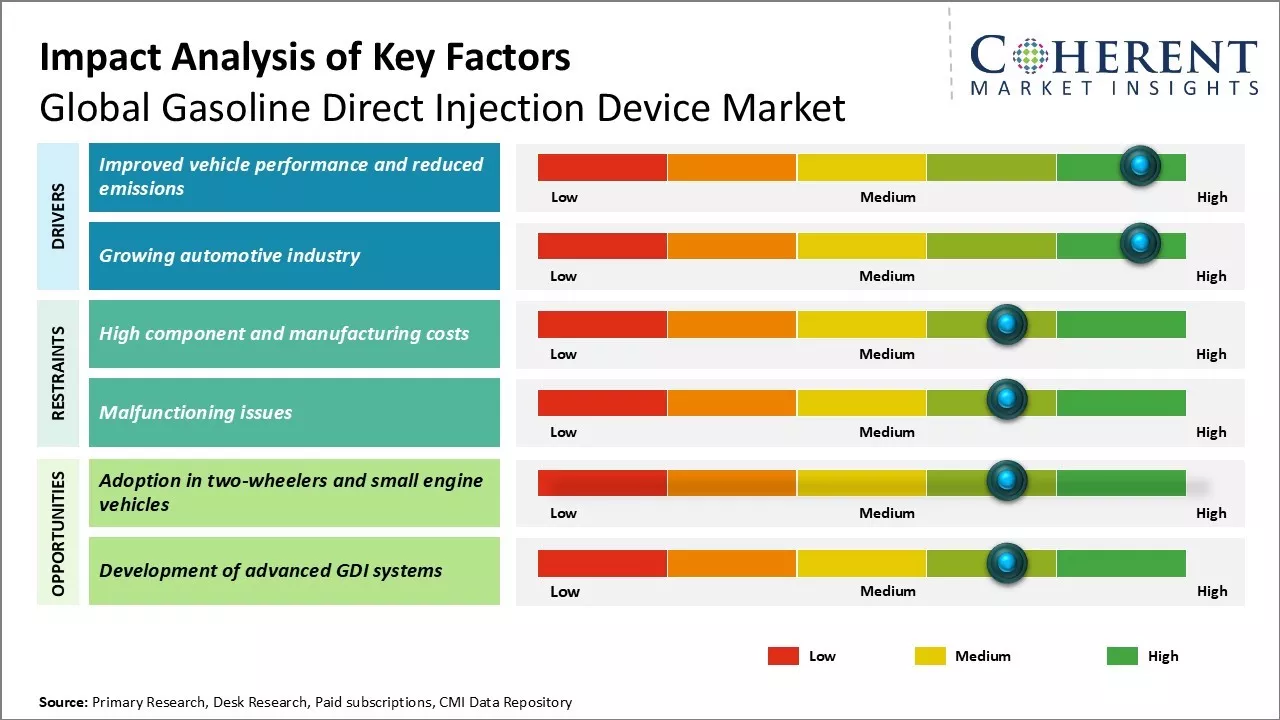The global gasoline direct injection device market is estimated to be valued at USD 8.26 Bn in 2025 and is expected to reach USD 12.68 Bn by 2032, exhibiting a compound annual growth rate (CAGR) of 6.3% from 2025 to 2032.

To learn more about this report, Request sample copy
The global gasoline direct injection device market has been witnessing steady growth over the past few years owing to the rising demand for fuel-efficient vehicles around the world. Many countries have stringent emission norms that mandate automakers to integrate new emission control technologies in vehicles.
Market Driver - Improved vehicle performance and reduced emissions
One of the primary drivers of the global gasoline direct injection device market is the improved vehicle performance and reduced emissions that GDI technology enables. Gasoline direct injection systems allow for a more optimized fuel-air mixture inside the combustion chamber, resulting in a more complete combustion of fuel. This boosts engine thermal efficiency and, in turn, improves fuel economy and power output of vehicles. Direct injection of fuel also permits engines to run with a higher compression ratio without knocking. A higher compression ratio enhances an engine's thermal efficiency, thereby improving vehicle acceleration and mileage.
Moreover, by directly injecting fuel into cylinders, gasoline direct injection allows unburned fuel and emissions to be significantly reduced. Directly injecting fuel at high pressure produces a finer fuel spray which evaporates and mixes with air more uniformly than traditional port fuel injection. This optimized air-fuel ratio supported by GDI technology results in lower emissions as the fuel is able to burn more completely with less residual hydrocarbons left unburned. The finely atomized fuel spray also helps in quicker evaporation which facilitates a more controlled combustion process, resulting in fewer emissions of pollutants like carbon monoxide, nitrogen oxides and particulate matter from the vehicle tailpipe. The cleaner and more efficient combustion supported by gasoline direct injection is thus a major factor driving its increasing adoption to meet various emissions regulations.
Joining thousands of companies around the world committed to making the Excellent Business Solutions.
View All Our Clients